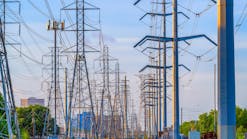IIJA, IRA and Private Funding Propel Renewable Energy Development
You’re probably familiar with the Infrastructure Investment and Jobs Act (IIJA), and the Inflation Reduction Act (IRA), both of which provide funding for clean energy initiatives and electricity infrastructure improvements, among other things. Some of that money is now in recipients’ hands and is beginning to impact the industry.
The White House announced in May 2023 that $220 billion in funding from the IIJA has been released so far. The money is being used on more than 32,000 projects across 4,500 communities throughout the country as part of President Biden’s Investing in America agenda. The DOE’s Grid Deployment Office (GDO), which is tasked with distributing the IRA funding and just commemorated its first anniversary, reported in its August 2023 newsletter that it has so far released $407 million in grid resilience grants to 23 states, 13 tribal entities, and four regions, including the District of Columbia.
In addition, the U.S. Department of Agriculture (USDA) released $10.7 billion in clean energy grants and loans to rural electricity providers. The Biden administration declared this as the "single largest investment in rural electrification" since the 1936 Rural Electrification Act. This money funds two initiatives. The first provides $9.7 billion in funds from the IRA and will be administered under the Empowering Rural America (ERA) program to build out renewable energy programs, zero-emission projects and carbon capture. ERA is exclusively for rural electric cooperatives. The second program, Powering Affordable Clean Energy (PACE) provides $1 billion that can be used to forgive up to 60% of loans for renewable energy projects that use wind, solar, hydropower, geothermal, or biomass, as well as for renewable energy storage projects.
The funding announcements that I’ve mentioned here are just the first of many more to come from the IIJA and IRA. There’s still a lot of money to be dispersed over the next few years. While this funding alone is not nearly enough to fully create the clean energy future the current administration and lawmakers envision, it has “primed the pump” so to speak, by motivating significant private investment in clean energy development.
Government funding and incentives along with private investment have led to record renewable energy deployments. According to the U.S. Energy Information Administration (EIA), about 21% of U.S. energy consumption in 2022 came from non-fossil fuel (renewables and nuclear)—a tie with 2020 as the highest share since the early 1900s. Wind, solar and battery storage accounted for 68 percent of new power additions to the grid over the past five years, according to American Clean Power’s Annual Market Report 2022. That same report also revealed that energy storage had a record 2022, commissioning 4 GW/12 GWh, which was an 80% increase in total operating storage capacity. In total, according to the report, the U.S. had nearly 228 GW of wind, solar and energy storage capacity online at the end of 2022, with another 137 GW of clean energy projects under development.
Fifteen to 20 years ago, many experts questioned whether transmission and distribution grids could operate reliably with large amounts of intermittent renewable energy. But, thanks to technological advancements, as well as tenacity and stellar problem-solving skills by utilities, grid operators, and solution providers that support them, the nation’s grids have steadily increased the amount of renewable energy being delivered to customers.
I live in Texas and believe it serves as a good example of how combining government funding and incentives with private investment are working. Texas is big, it covers nearly 269,000 square miles of land. The state has more installed wind capacity than any other state and is second to only California in solar capacity. Solar is catching up, however. The EIA estimates Texas will install more utility-scale solar capacity in 2023 than any other state—around 7.7 gigawatts. The boom in new solar is driven by the falling costs of solar installations, hefty tax incentives (up to 26 percent) and completion of several large solar projects, including the state’s largest—Roadrunner, a 497 MW solar plus storage project located in the Permian Basin, the largest petroleum-producing basin in the U.S.
ERCOT, the state’s independent system operator, breaks down capacity by fuel type on its website. It lists the maximum solar and wind capacity in the state at just over 21 GW and nearly 39 GW, respectively. Natural gas remains the state’s main power generation fuel source. Nevertheless, in certain conditions, often in the mornings before the temperature reaches triple digits, wind and solar energy’s contribution surpasses that of natural gas. If you add in nuclear, hydro and energy storage, the percentage of zero carbon capacity sometimes trumps natural gas and coal combined. The latest statistics from the EIA show that in June 2023, wind, solar, and nuclear generated up to 55% of total power in Texas, keeping the use of natural gas-fired generation below 50%.
This summer (as of Aug. 17), Texas has broken 10 daily electricity consumption records, with the most recent at the time of this writing being 85,435 MW on August 10. In addition to extreme heat, Texas is experiencing record population growth…more than a half million people have moved to the state each year since 2020. This population growth, coupled with numerous 100+ degree days and an islanded transmission system have caused concern and even led to a couple of voluntary conservation requests from ERCOT. So far, however, the grid has held up. Texas, an oil and gas state, is proving that renewables have a place alongside fossil fuels. The combination has so far allowed the Lone Star state to provide reliable electricity to its residents at a reasonable cost (another result of the state’s abundant renewable energy and, to be fair, lower natural gas prices in 2023) even during extreme heat. I think Texas is a good example of what the IIJA and IRA were designed to do in these early years, but we can’t forget that grid investment is also key to continued progress.


